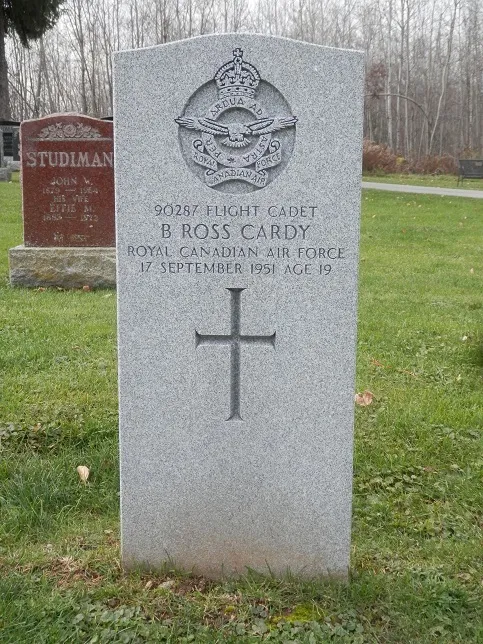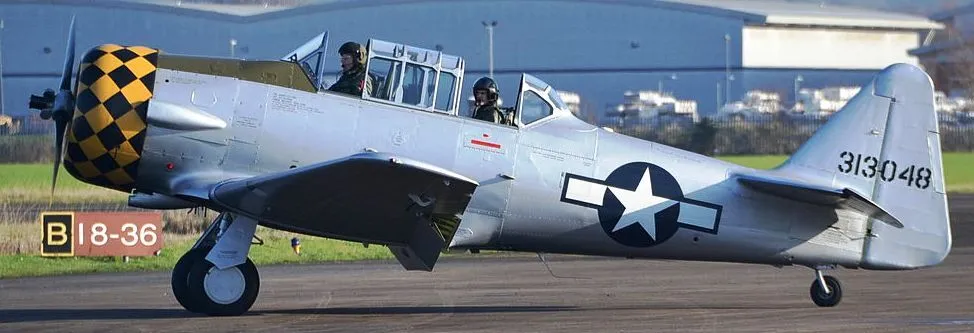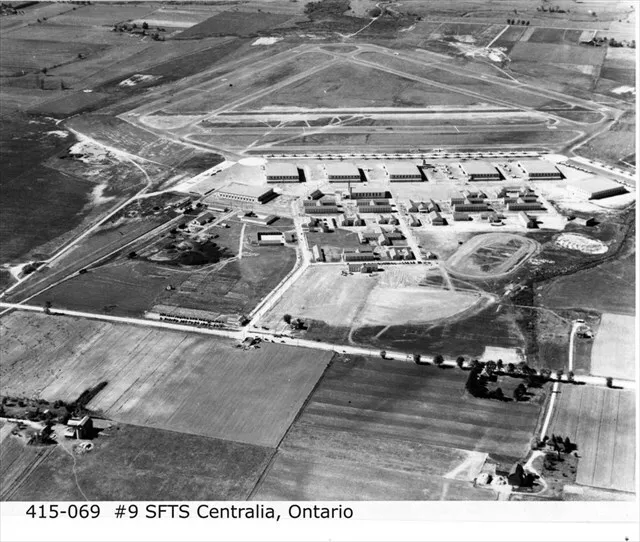Cardy, Bruce Ross (Flight Cadet)
Killed in Flying Accident 1951-September-17


Birth Date: 1931-December-11
Born: Brant County, Ontario
Parents: George Cardy of New Liskeard, Ontario & Clara Claire of Sudbury, Ontario
Spouse:
Home: Brant County, Ontario
Enlistment: Toronto, Ontario
Enlistment Date: 1950-December-04
Service
RCAF
Unit
1 FTS- Flying Training School
Base
Rank
Flight Cadet
Position
Service Numbers
90287
Crew or Other Personnel
Texan T-6 4285174
Texan T-6 serial: 4285174

North American AT-6D Texan (Serial No. 313048), Reg. No. G-TDJN, David Nock
The North American Aviation T-6 Texan is an American single-engined advanced trainer aircraft used to train pilots of the United States Army Air Forces (USAAF), United States Navy, Royal Air Force, Royal Canadian Air Force and other air forces of the British Commonwealth during World War II and into the 1970s. Designed by North American Aviation, the T-6 is known by a variety of designations depending on the model and operating air force. The United States Army Air Corps (USAAC) and USAAF designated it as the AT-6, the United States Navy the SNJ, and British Commonwealth air forces the Harvard, the name by which it is best known outside the US. Starting in 1948, the new United States Air Force (USAF) designated it the T-6, with the USN following in 1962. It remains a popular warbird used for airshow demonstrations and static displays. It has also been used many times to simulate various historical aircraft, including the Japanese Mitsubishi A6M Zero. A total of 15,495 T-6s of all variants were built.
At the end of WW II, although the RCAF retained the Harvard as a trainer, a large number of them were sold off to civilian operators. The RCAF soon regretted this, for by 1949 the Cold War with the Soviet Union was in full swing and the RCAF urgently needed trainers again. 100 T-6J Texans were leased temporarily from the USAF and a further 270 Harvards, the Mk. IV version, were ordered from Canadian Car & Foundry, Thunder Bay.
The Texan's ancestry goes back to the North American NA-16 prototype which was first flown on April 1, 1935. In 1935, NAA submitted this design for the U.S. Army Air Corps Basic Trainer Competition. NAA also targeted the export market. Wikipedia (with revisions)
Unit Desciption
1 FTS (1 Flight Training School)
RCAF.info - RCAF Station Centralia Ontario

